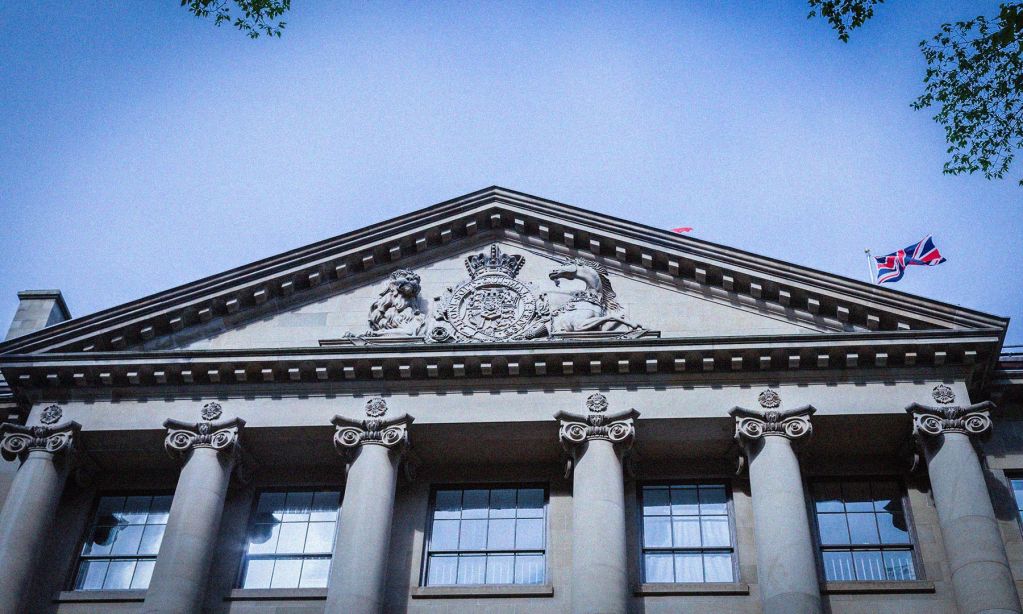On March 15, we released the Nova Scotia Alternative Budget. It was constructed to show what taxing and spending looks like in a budget that leaves no one behind.
The provincial government’s budget, which they released on March 23, unfortunately leaves many Nova Scotians behind.
This government still needs to come to terms with the scale and scope of the investment required to address structural and systemic barriers that prevent many Nova Scotians from reaching their full potential. Long before the recent cost of living crisis, many Nova Scotians struggled to make ends meet. They will struggle even more when you consider the impact of the high inflationary increase (comparing February 2022 to 2023) of 6.5 per cent overall and 9.6 per cent in food costs. These cost increases have an impact on everyone who has not seen their income increase and cannot absorb these costs, and it also impacts all operating expenditures in the budget.
The path we have been on for decades has left many feeling depleted and fearful of the future. This budget does little to allay those fears, especially for those trapped under the weight of student debt or other debt used to fill in gaps even for essential goods, with the household debt to income ratio at 180.47—that means households owed $1.80 in credit market debt for every dollar of household disposable income. That ratio was 86.11 in 1990.
If it chooses, Nova Scotia is in a strong economic and fiscal position and could have addressed the most pressing problems facing our province—while maintaining a fiscally responsible approach.
Revenue is up $1.7 billion, including over $260 million in HST revenue alone. Yet, it chose not to expand and provide additional income using the Nova Scotia Affordable Living Tax Credit, designed to offset the sales tax. This would at least signal that they recognize the disproportionate burden inflation has on low to moderate-income Nova Scotians.
Instead, it increased the tax cuts offered to another $35 million; these small tax cuts for individuals under 30 working at specific jobs will not make a difference in whether they stay or go. Investing those millions in universal public services, making education more affordable, and cancelling student loan interest would go further.
The Alternative Budget invests an additional $1.5 billion in net operating expenditures over and above inflationary adjustment to current operating expenditures (an additional $2 billion). The government budget invests $1.5 billion, which would barely cover service cost increases due to inflationary and population increases. Instead, half of this $1.5 billion is invested in providing “more health care, faster,” while the other half is meant to cover a myriad of initiatives. What is not covered in the other half is any recognition of addressing the social determinants of health and helping to stem the increase in healthcare needs.
The growth projections in the NS budget are very conservative, as are their inflationary projections. This is concerning because underestimating Nova Scotia’s fiscal strength is common and problematic when used to hide what is possible, thus lowering expectations. It is time we raised our expectations. The government has tabled a small deficit, and the debt to GDP is projected to rise only slightly. They had the fiscal room to do much more.
Here is what we expected, and here is what we got:
Poverty
We know the impact reducing poverty has on those living it and that the cost of only supporting people to languish in poverty has—that is why the NSAB invested in bringing everyone on income assistance to the poverty line within the next three years.
In contrast, the NS Budget left those on income assistance another year with no increase, leaving them to struggle to make ends meet with significantly less purchasing power. Indeed, the NS budget projects a decrease to the ESIA budget. The small increase of a couple of hundred dollars a year to the Nova Scotia Child Benefit is an example of a small change that will continue to have little impact on child poverty, ignoring the evidence that bold, significant investment is what is needed to reduce poverty.
Housing
We know the impact that having an affordable place to live has on those who are on the street and those who are at risk of losing their house—that is why the NSAB’s most significant capital investment is almost $700 million to build new public and nonprofit housing, with a commitment to invest $6 billion over the next five years. That is needed to address the core housing need of the more than 30,000 Nova Scotians without affordable housing.
The NS budget only invests an additional $8 million in rent supplements for 1000 more Nova Scotians (for a total of 8000). This is a drop in the bucket compared to the need and does not address the underlying problem of an ineffective rent cap, lack of an unaffordable market, and the need for building housing, prioritizing non-market housing.
Healthcare
We know what a difference it would make if people could access the public services they need—that is why the NSAB invests in removing pharmacare premiums and ambulance fees and expanding access to health care via community health centres.
The NS budget freezes pharmacare fee increases, and leaves ambulance fees untouched. There needs to be more investment in building more community health centres and support for those that exist in the province with core funding. Tax cuts and wage bonuses do not go far enough to recognize the need for staff retention, and recruitment, with continued investment in travel nurses, no significant increase in long-term care, very little in home care, and no increase in midwifery. Seeing that the public health budget is back to pre-pandemic amounts representing only one per cent of the total healthcare budget, is very concerning. The recommendation is that it should represent five per cent of the budget (last year, it was close to that, but most of the funding appeared to be federal).
Investing in the next generation
The NSAB invests significantly in education from early childhood to postsecondary. The NSAB also supports early childhood educators' wages and further expansion of child care, enhancing the wages of substitute teachers and hiring more permanent teachers. It also invests in the team of professionals and resources required to ensure quality educational opportunities at every grade level for all students.
The NSAB invests in ensuring people attain affordable post-secondary education by removing tuition from community college, removing interest on student loans and converting them to grants to top saddling young people and their families with debt for their education.
In contrast, the NS budget invests no additional funding outside of what has been committed in the child care bilateral agreement. It invests half as much as the NSAB in education, covering only additional enrollment and inflationary pressures in the school system. The NS budget only invests in helping make student loan payments more manageable by decreasing the minimum monthly payment.
Transformational climate investments and transitioning to a green, caring economy
We must transition to renewable energy and stop extractive ecological destruction. The level of investment needed is two per cent of GDP or around $800 million--the $80 million total that is currently invested is a fraction. The climate crisis presents an opportunity to invest in diversifying our economy to build an inclusive economy that values the diversity of people and skills in our province. As we transition to a greener economy, we must help workers adapt to changing skill needs. We also need to centre jobs in the caring economy. The caring economy will remain in crisis without significant funding for staffing and training. A one per cent increase in university funding is a cut, leaving universities to fund more of their programs out of tuition and fee increases.
We can no longer focus on economic growth for growth's sake, yet that is being celebrated in this budget. There is no trickle-down.
We must consider who shares in that growth and whether it benefits or harms human health, our planet, and our well-being as a society. Similarly, we cannot just focus on job creation without considering the quality and kind of jobs created. These principles are embedded in this year’s alternative budget but are nowhere to be seen in the Nova Scotia budget.
The Nova Scotia government must build a robust social safety net to better care for each other, ready us to deal with the current crises, mitigate the next one and prevent it.
Describing a half-a-billion dollar investment in building bridges and highways as the most significant expense in building healthy communities misses the mark on what it takes for Nova Scotians to be healthy.
The Nova Scotia government largely missed the opportunity to shift course and give people hope by investing in them and their future.







